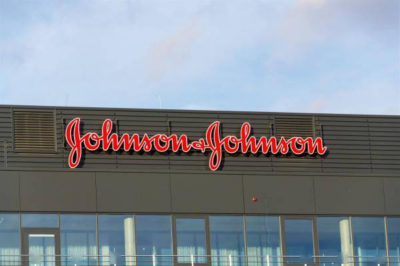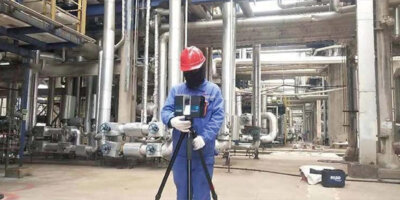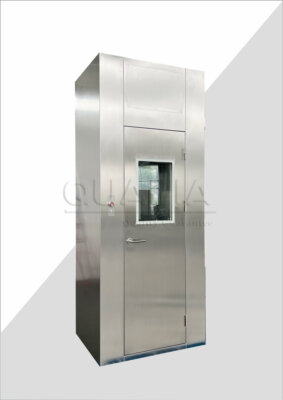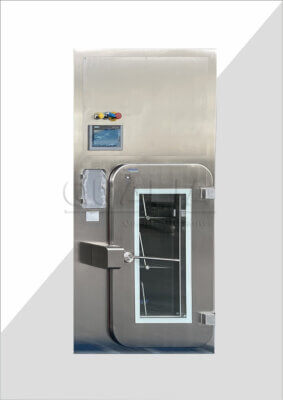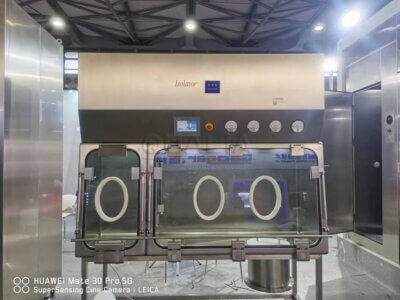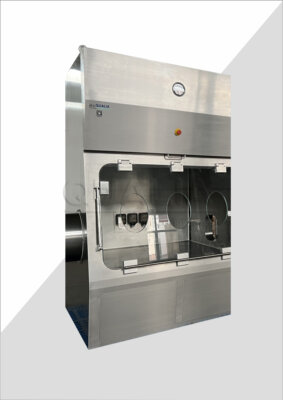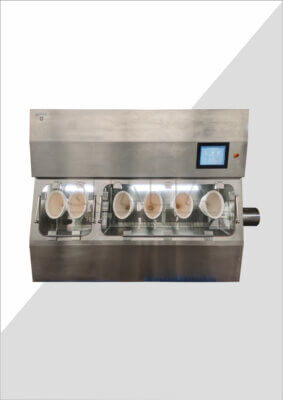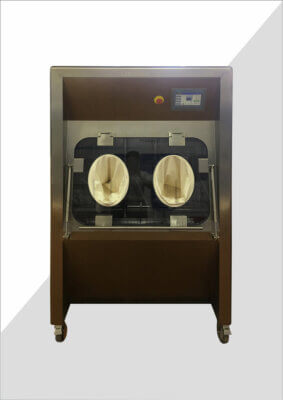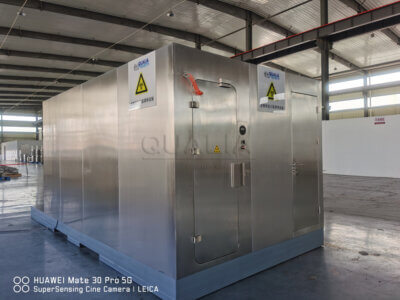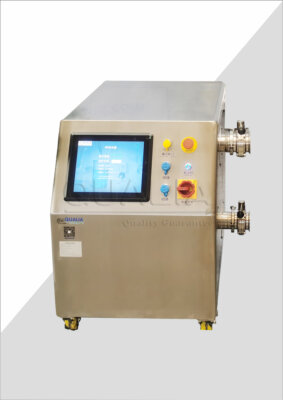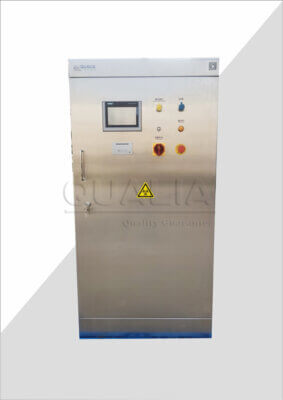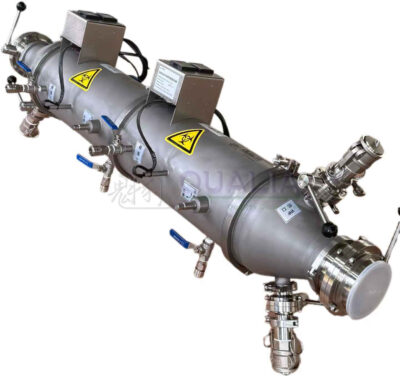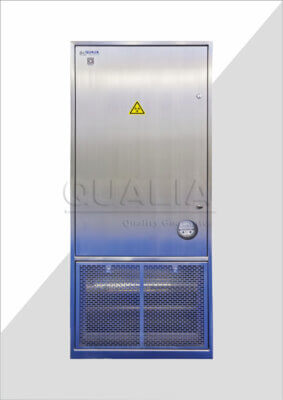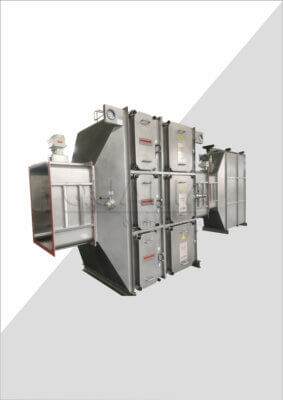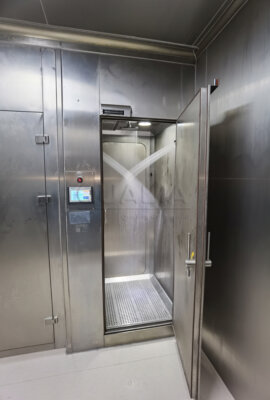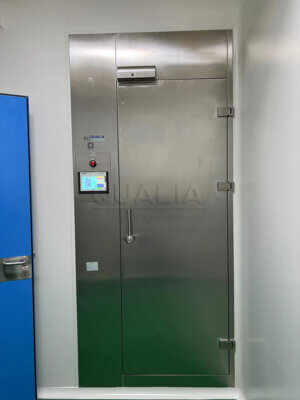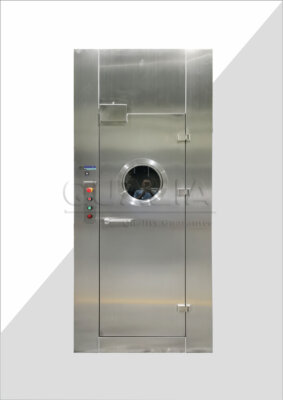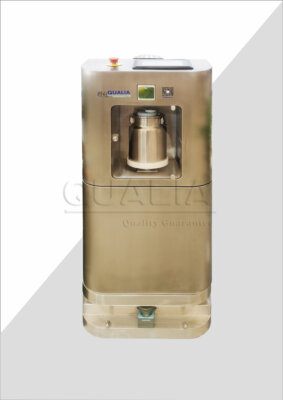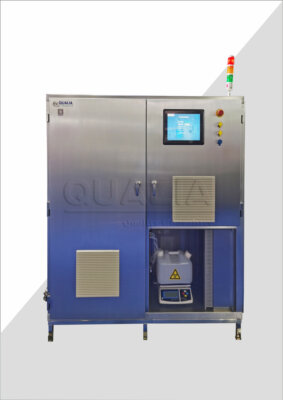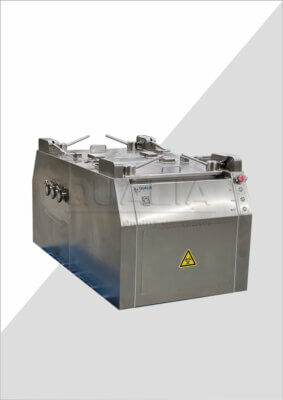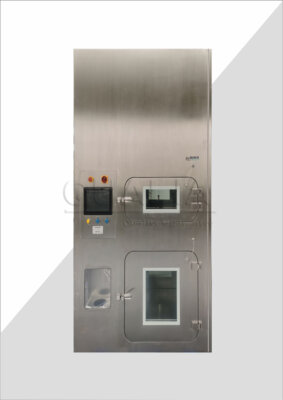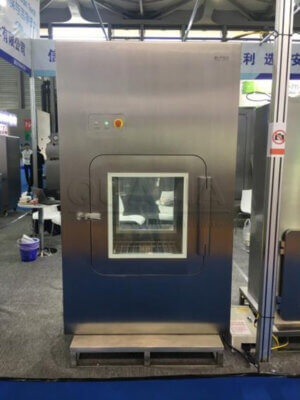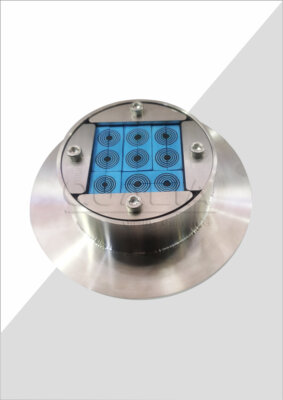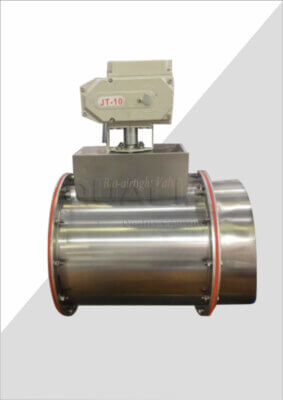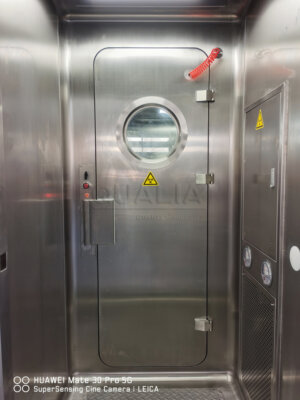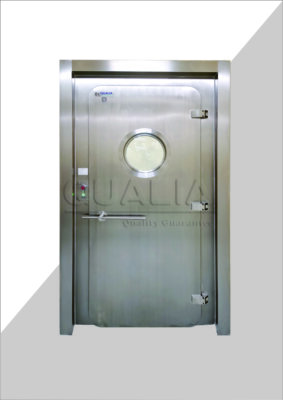In today’s stringent industrial environments, maintaining precise environmental controls isn’t just a preference—it’s a critical requirement that can make or break operational success. Pneumatic seal apr doors represent a sophisticated solution for facilities requiring absolute contamination control, pressure management, and environmental isolation. Whether you’re managing a pharmaceutical manufacturing plant, research laboratory, or cleanroom facility, the challenge of maintaining sterile environments while ensuring operational efficiency has never been more complex.
The consequences of inadequate sealing systems extend far beyond minor inconveniences. Failed environmental controls can result in product contamination, regulatory violations, substantial financial losses, and compromised safety protocols. A single breach in contamination control can cost pharmaceutical companies millions in product recalls and regulatory penalties.
This comprehensive guide examines the technical specifications, applications, and strategic considerations surrounding pneumatic seal apr doors, providing decision-makers with the insights needed to select optimal sealing solutions. From understanding core functionality to evaluating installation requirements, we’ll explore how these advanced door systems deliver superior performance in demanding industrial applications. QUALIA Bio-Tech leads the industry in providing cutting-edge pneumatic sealing solutions for complex environmental control challenges.
What Are Pneumatic Seal APR Doors and How Do They Work?
Apr door pneumatic seals represent advanced engineering solutions designed to create hermetic barriers between controlled environments. These systems utilize pressurized air mechanisms to compress specialized sealing materials against door frames, creating virtually impenetrable barriers against contamination, pressure differentials, and environmental intrusion.
Core Components and Mechanisms
The fundamental architecture of pneumatic seal systems consists of inflatable gaskets, precision control valves, and integrated monitoring systems. When activated, compressed air inflates rubber or elastomer seals positioned around the door perimeter, creating uniform pressure distribution that eliminates microscopic gaps. This mechanism achieves sealing effectiveness levels exceeding 99.99% efficiency in laboratory testing conditions.
The control system regulates inflation pressure based on environmental requirements, typically operating within 2-15 PSI ranges depending on application demands. Advanced systems incorporate feedback sensors that continuously monitor seal integrity, automatically adjusting pressure levels to maintain optimal performance throughout operational cycles.
Operational Advantages Over Traditional Sealing Methods
Unlike conventional mechanical seals that rely on physical compression, pneumatic systems provide consistent sealing force regardless of door wear or structural settling. This adaptability ensures long-term performance stability, particularly crucial in facilities where environmental control cannot be compromised.
| Feature | Pneumatic Seals | Mechanical Seals |
|---|---|---|
| Sealing Consistency | Maintains uniform pressure | Degrades over time |
| Maintenance Requirements | Periodic inspection | Frequent replacement |
| Environmental Adaptability | Adjusts to conditions | Fixed performance |
| Installation Complexity | Moderate | Simple |
In our experience working with pharmaceutical facilities, pneumatic sealing systems demonstrate superior performance in applications requiring frequent access while maintaining sterile conditions. The ability to engage and disengage seals rapidly without compromising effectiveness provides operational flexibility that traditional systems cannot match.
Why Choose Industrial Pneumatic Door Seals for Critical Applications?
Industrial pneumatic door seals address specific challenges that conventional sealing methods cannot adequately resolve. These systems excel in environments where contamination control, pressure maintenance, and regulatory compliance intersect to create demanding operational requirements.
Superior Contamination Control Performance
Research conducted by the International Controlled Environment Testing Association demonstrates that pneumatic sealing systems achieve contamination barrier effectiveness 15-20% higher than traditional mechanical seals. This improvement stems from the uniform pressure distribution that eliminates microscopic gaps where contaminants typically infiltrate.
The inflatable seal design accommodates irregular surfaces and minor structural imperfections that would compromise rigid sealing systems. According to Dr. Sarah Chen, a cleanroom contamination specialist, “Pneumatic seals provide the adaptability necessary for maintaining sterile environments in facilities where absolute contamination control is non-negotiable.”
Pressure Differential Management
Critical applications often require precise pressure differentials between adjacent spaces. Pneumatic sealing systems maintain pressure differentials within ±0.02 inches of water column, significantly tighter than the ±0.05 inch tolerance typical of mechanical systems. This precision proves essential in pharmaceutical manufacturing, where product quality depends on maintaining specific environmental conditions.
Regulatory Compliance Advantages
FDA and ISO standards for pharmaceutical and medical device manufacturing increasingly emphasize environmental control documentation. Pneumatic systems provide integrated monitoring capabilities that automatically log sealing performance data, simplifying compliance reporting and audit preparation.
However, it’s worth noting that pneumatic systems require more complex installation procedures compared to traditional sealing methods. The need for compressed air infrastructure and electrical control systems can increase initial project costs by 25-30%. Organizations must weigh these upfront investments against long-term operational benefits and regulatory compliance requirements.
How to Select the Right APR Door Sealing Systems for Your Facility?
Selecting appropriate apr door sealing systems requires careful evaluation of operational requirements, environmental conditions, and performance expectations. The decision process involves analyzing multiple technical and operational factors that influence system effectiveness and long-term viability.
Environmental Assessment Requirements
Begin by conducting comprehensive environmental analysis of areas where pneumatic sealing will be implemented. Temperature fluctuations, humidity levels, chemical exposure, and cleaning protocols all impact seal material selection and system configuration. Facilities experiencing temperature variations exceeding 40°F require specialized elastomer compounds that maintain sealing properties across broader temperature ranges.
Pressure requirements represent another critical consideration. Standard pneumatic systems accommodate pressure differentials up to 2 inches of water column, while specialized applications may require systems capable of managing differentials exceeding 5 inches. These higher-pressure applications typically demand reinforced seal designs and enhanced control systems.
Traffic Flow and Access Patterns
Door usage frequency significantly influences system design requirements. High-traffic applications benefit from rapid seal engagement/disengagement capabilities, while infrequently accessed doors may prioritize maximum sealing effectiveness over operational speed. A recent study by the Cleanroom Technology Institute found that doors accessed more than 50 times daily require additional wear-resistant components to maintain optimal performance.
Integration with Existing Building Systems
Successful pneumatic seal implementation depends on seamless integration with existing HVAC, fire safety, and access control systems. Modern pneumatic door systems communicate with building automation networks, providing real-time status information and coordinating with emergency procedures.
| System Integration | Requirements | Benefits |
|---|---|---|
| HVAC Coordination | Pressure monitoring | Optimized air handling |
| Fire Safety | Emergency release | Code compliance |
| Access Control | User authentication | Enhanced security |
| Building Automation | Network communication | Centralized monitoring |
Our experience with research facility installations demonstrates that early coordination with existing building systems reduces installation time by 30-40% while improving overall system reliability.
What Are the Key Applications for Pneumatic APR Door Systems?
Pneumatic apr door applications span diverse industries where environmental control, contamination prevention, and operational efficiency converge. Understanding specific application requirements helps organizations identify opportunities where pneumatic sealing systems provide optimal solutions.
Pharmaceutical Manufacturing Environments
Pharmaceutical facilities represent the most demanding applications for pneumatic sealing systems. These environments require absolute contamination control while maintaining operational efficiency for complex manufacturing processes. Active pharmaceutical ingredient (API) production areas utilize pneumatic seals to maintain sterile conditions during material transfers and equipment maintenance.
Case study: A major pharmaceutical manufacturer implemented pneumatic sealing systems in their sterile filling facility, achieving 99.97% contamination barrier effectiveness while reducing product rejection rates by 12%. The system’s ability to maintain precise pressure differentials during high-frequency access scenarios proved crucial for maintaining production schedules without compromising sterility.
Research Laboratory Applications
Research laboratories, particularly those handling biological materials or conducting clinical trials, benefit from pneumatic sealing systems’ adaptability and precision. Biosafety Level 2 and 3 laboratories require sealing systems that can accommodate decontamination procedures while maintaining containment integrity.
The National Institute of Health reports that laboratories using pneumatic sealing systems experience 25% fewer contamination incidents compared to facilities using conventional sealing methods. This improvement stems from the systems’ ability to maintain consistent performance despite frequent cleaning with aggressive disinfectants.
Cleanroom Manufacturing Facilities
Semiconductor manufacturing, medical device production, and precision electronics assembly require cleanroom environments with strict particulate control. Pneumatic sealing systems support these requirements by preventing external contamination while accommodating the frequent material and personnel transfers necessary for manufacturing operations.
However, cleanroom applications present unique challenges including compatibility with specialized cleaning chemicals and integration with laminar airflow systems. Organizations must carefully evaluate seal materials and system configurations to ensure long-term compatibility with cleanroom protocols.
How to Implement and Maintain Industrial Door Seal Solutions?
Successful implementation of industrial door seal solutions requires systematic planning, professional installation, and ongoing maintenance programs. The complexity of pneumatic systems demands careful attention to installation details and proactive maintenance strategies.
Installation Planning and Preparation
Installation begins with comprehensive site assessment including structural evaluation, utility requirements, and integration planning. Pneumatic systems require dedicated compressed air supplies, typically 80-100 PSI, along with electrical connections for control systems and monitoring equipment.
Structural modifications may be necessary to accommodate pneumatic seal hardware, particularly in retrofit applications. Door frames must provide adequate space for inflatable seals and associated hardware while maintaining structural integrity. According to installation specialists, proper preparation accounts for 60% of installation success.
System Configuration and Testing
Initial system configuration involves calibrating inflation pressures, programming control sequences, and establishing monitoring parameters. Testing procedures verify sealing effectiveness, pressure maintenance capabilities, and emergency operation functions.
Comprehensive testing protocols include:
- Pressure decay testing to verify seal integrity
- Contamination barrier effectiveness measurement
- Emergency release function verification
- Integration testing with building systems
Maintenance Requirements and Schedules
Pneumatic sealing systems require regular maintenance to ensure optimal performance and longevity. Typical maintenance intervals include monthly seal inspection, quarterly pressure testing, and annual comprehensive system evaluation.
| Maintenance Task | Frequency | Duration |
|---|---|---|
| Visual seal inspection | Monthly | 30 minutes |
| Pressure system testing | Quarterly | 2 hours |
| Control system calibration | Semi-annually | 4 hours |
| Complete system overhaul | Annually | 8 hours |
In our experience with pharmaceutical facilities, proactive maintenance programs reduce system downtime by 40% while extending seal life by 25%. The key is establishing consistent maintenance schedules that accommodate operational requirements while ensuring system reliability.
While pneumatic systems require more sophisticated maintenance compared to mechanical seals, the investment in proper maintenance yields significant returns through improved reliability and extended system life. Organizations should budget 3-5% of initial system cost annually for maintenance activities.
What Are the Future Trends in Pneumatic Seal Technology?
The evolution of pneumatic seal technology continues advancing toward greater automation, improved materials, and enhanced integration capabilities. Understanding these trends helps organizations make informed decisions about timing and system specifications for pneumatic sealing implementations.
Smart Monitoring and Predictive Maintenance
Advanced pneumatic systems increasingly incorporate IoT sensors and machine learning algorithms for predictive maintenance and performance optimization. These systems monitor seal performance in real-time, identifying potential issues before they impact operations.
Recent developments in sensor technology enable continuous monitoring of seal pressure, temperature, and wear indicators. This data feeds into predictive maintenance algorithms that schedule maintenance activities based on actual system condition rather than predetermined intervals.
Advanced Materials and Seal Designs
Material science advances continue improving seal durability and chemical resistance. New elastomer compounds demonstrate enhanced performance in demanding chemical environments while maintaining sealing effectiveness over extended operational periods.
Research indicates that next-generation seal materials may achieve 50% longer service life while providing superior chemical resistance. These improvements reduce maintenance requirements and total cost of ownership for pneumatic sealing systems.
Integration with Industry 4.0 Technologies
Modern pneumatic sealing systems integrate seamlessly with Industry 4.0 manufacturing systems, providing real-time operational data and coordinating with overall facility automation. This integration enables optimization of environmental control systems based on actual operational conditions.
The future points toward fully automated environmental control systems where pneumatic seals operate as integral components of comprehensive contamination control strategies. Organizations implementing these advanced systems report 20-30% improvements in overall environmental control effectiveness.
Conclusion
Pneumatic seal APR doors represent sophisticated solutions for organizations requiring absolute environmental control, contamination prevention, and operational efficiency. These systems deliver superior performance through adaptive sealing mechanisms, precise pressure management, and integrated monitoring capabilities that conventional sealing methods cannot match.
The key advantages include exceptional contamination barrier effectiveness, adaptability to varying operational conditions, and comprehensive compliance support for regulated industries. While initial implementation requires greater investment and technical complexity compared to traditional sealing methods, the long-term benefits in operational reliability, regulatory compliance, and contamination control justify these considerations.
Organizations evaluating pneumatic sealing systems should focus on comprehensive needs assessment, professional installation, and proactive maintenance programs. The future of pneumatic sealing technology promises even greater automation, improved materials, and enhanced integration capabilities that will further expand application possibilities.
For facilities where environmental control cannot be compromised, pneumatic seal APR doors provide the reliability and performance necessary for operational success. As technology continues evolving, these systems will become increasingly essential for maintaining competitive advantage in regulated industries.
Consider how pneumatic sealing systems might address your facility’s specific environmental control challenges. The investment in advanced sealing technology today positions organizations for long-term success in increasingly demanding operational environments. Explore comprehensive pneumatic seal APR door solutions that deliver the performance and reliability your critical applications demand.
Frequently Asked Questions
Q: What are Pneumatic Seal APR Doors, and why are they important in industrial applications?
A: Pneumatic Seal APR Doors are specialized sealing systems designed to ensure airtight and secure closure in industrial environments where compressed air systems are used. They prevent air leakage, maintain pressure integrity, and enhance operational safety and efficiency. These doors are crucial in applications requiring controlled environments, such as manufacturing plants, chemical processing, and clean rooms, by reducing contamination and energy loss through effective sealing. Their use helps optimize pneumatic system performance and durability.
Q: How do Pneumatic Seal APR Doors work in maintaining system efficiency?
A: Pneumatic Seal APR Doors operate by using durable sealing materials that create a tight barrier around door edges to prevent the escape of compressed air or gases. The seals accommodate movement and pressure changes while resisting wear from industrial conditions. This leakage prevention preserves pressure levels, reduces energy consumption, and protects sensitive equipment from contaminants like dust and moisture. Overall, these doors contribute to safer and more reliable pneumatic systems by maintaining airtight seals under varying operational stresses.
Q: What materials are typically used in Pneumatic Seal APR Doors for industrial use?
A: The materials commonly used for Pneumatic Seal APR Doors include elastomers such as Nitrile (NBR), EPDM, FKM (Viton®), silicone, and PTFE (Teflon). These materials are selected based on durability, chemical resistance, temperature tolerance, and flexibility. For instance:
- NBR offers good oil and abrasion resistance.
- EPDM is excellent for weather and ozone resistance.
- FKM resists aggressive chemicals and high temperatures.
- Silicone provides flexibility in extreme temperatures.
- PTFE is preferred for low friction and high wear resistance.
Choosing the right material ensures optimal sealing performance in a specific industrial environment.
Q: In which industries are Pneumatic Seal APR Doors most commonly applied?
A: Pneumatic Seal APR Doors are widely used across various industries, including:
- Manufacturing and automotive assembly where controlled environments and pneumatic systems are common.
- Chemical and petrochemical sectors for safe containment and pressure maintenance.
- Food and pharmaceutical industries where hygiene and contamination prevention are critical.
- Mining and construction machinery requiring robust sealing under harsh conditions.
- Aerospace and marine sectors demanding precise environmental control and system efficiency.
These applications benefit from the doors’ ability to provide airtight seals critical for maintaining operation safety and efficiency.
Q: What are the key considerations when selecting Pneumatic Seal APR Doors for an industrial setting?
A: When choosing Pneumatic Seal APR Doors, consider the following:
- Operating environment: Temperature ranges, exposure to chemicals, and contamination levels.
- Material compatibility: Seal material must resist wear and chemical exposure specific to the application.
- Pressure requirements: Ensure seals can maintain integrity under expected pneumatic pressures.
- Durability and maintenance: Select durable seals requiring minimal maintenance to reduce downtime.
- Custom design needs: Some applications may require tailored sealing solutions for optimal performance.
Evaluating these factors helps ensure that the selected seal doors maximize efficiency and longevity in industrial use.
Q: How do Pneumatic Seal APR Doors contribute to safety and maintenance efficiency in industrial operations?
A: Pneumatic Seal APR Doors enhance safety by preventing leakage of compressed air or hazardous gases, reducing risks of contamination, explosion, or environmental damage. They also protect sensitive components from dust and moisture ingress, minimizing equipment failure. From a maintenance perspective, these seals reduce wear and tear by ensuring consistent pressure and environmental control, leading to fewer breakdowns and lower repair costs. Their robust design simplifies routine inspections and replacements, thereby improving overall operational uptime and reliability.
External Resources
- Pneumatic Seal APR Doors – Presray – Detailed overview of pneumatic seal APR doors, including their airtight sealing mechanism, material options, and use cases in high containment industrial and laboratory environments.
- Pneumatic Seal APR Doors – BioSafe Tech by QUALIA – Comprehensive guide to features and technical specifications of pneumatic seal APR doors, including seal integrity, construction materials, emergency escape functionality, and control system details.
- Inflatable Seal APR Door HC-ISD – PBSC Inc – Explains the design and applications of inflatable pneumatic seal doors for containment, cleanrooms, and laboratory environments, highlighting tailored material choices and flush doorframe benefits.
- APR Doors with Airtight Mechanical Seals – Presray – Provides a comparison between mechanical seal and pneumatic seal APR doors, discussing where and why each type is most effective for industrial containment.
- Applications of Inflatable Seals for Industrial Chiller Doors – Sealmaster – Discusses the role of inflatable (pneumatic) seals in industrial applications, such as chiller doors, focusing on performance benefits like airtightness and contamination prevention.
- High Containment Doors for Laboratories – PBSC Inc – Presents an overview of various high containment door technologies, including pneumatic seal options, for laboratory and industrial applications requiring superior airtight sealing.
Related Contents:
- What Are APR Door Pneumatic Seals and How They Work
- Pneumatic vs. Electric Bio-safety Isolation Dampers
- BSL-3 Airlocks: Door Specs for Lab Security
- Advanced Sealing Technologies Expert Insights
- Revolutionizing Door Technology: QUALIA’s Pneumatic Seal APR Doors
- Essential BIBO System Maintenance Checklist
- Revolutionizing Door Technology: QUALIA’s Pneumatic Seal APR Doors
- How to Install a Bio-safety Isolation Damper: 7 Steps
- 5 Essential Maintenance Tips for OEB5 Isolators

